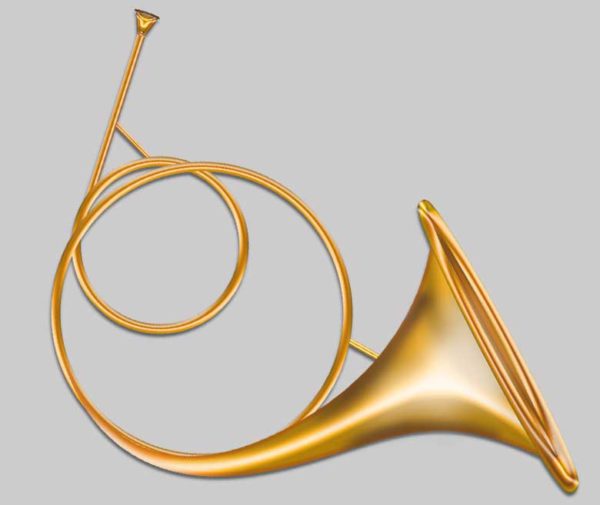Rediscovering the Baroque Horn
Todd Williams, Principal Horn, talks about his instrument
This article originally appeared in our October 2006 newsletter. It has been slightly modified.

Here’s a challenge: take sixteen feet of coiled brass tubing with a bell opening at one end and a mouthpiece at the other, and make music on it. How about playing Handel’s “Va tacito?” Sound difficult? It is.
The “natural” or valveless horn is a tricky instrument to play. There are many reasons why it evolved over time into the “modern” (French) horn that we know today. For one, it takes more energy to project the sound on old horns. It takes special precision and confidence to place the notes properly.
Baroque horns don’t even have tuning slides. “If you had a bad instrument maker,” says Todd Williams, hornist with Tempesta di Mare, “then your instrument was simply out of tune.” Years later, in the Classical period, horns finally gained the luxury of a tuning slide. Even then, however, a horn player still couldn’t play every note as evenly as the next. It wasn’t until the early nineteenth century that the development of valves finally allowed the instrument to play chromatic scales (relatively) easily.

So, if horns were improved by adding valves, why not use them? Why work so hard? Why try to wrestle these recalcitrant instruments into tune? Some people aren’t deterred by problems such as these. Instead, they’re attracted to reviving a lost art like old horns, with traditions that more-or-less died with the horns. What’s left—besides glorious music—is a few horns, a couple of instruction manuals, and some pictures. Modern musicians puzzle over them, studying hand and horn positions, instrument designs, brainstorming blowing techniques, articulation patterns, etc. trying to ferret out the playing secrets of the 18th century.
“Why play instruments that appear to be less developed than modern instruments?” Todd Williams muses. “Well, there’s certainly the historical aspect of it all.” But first and foremost, he’s a musician and performer who appreciates the older instrument’s mellow sound, soft articulations, and other subtleties.
And there’s more. “When I hear a horn player who hasn’t been trained on a period instrument, it’s almost painfully obvious. Take any Mozart concerto, for example. Most modern players will gloss over so many intricacies of articulations and phrasings of nearly any given passage. The nuances are lost. Mozart was a clever guy; he knew what he was doing. Immediately I know that that person doesn’t really understand the instrument for which the piece was written. The ink on the page might say ‘horn,’” says Williams, “but it’s not at all the same thing he’s holding.”
Anne Hunter, Contributing Editor, is a writer and art historian living in Philadelphia.
